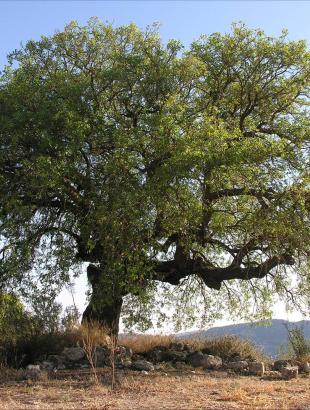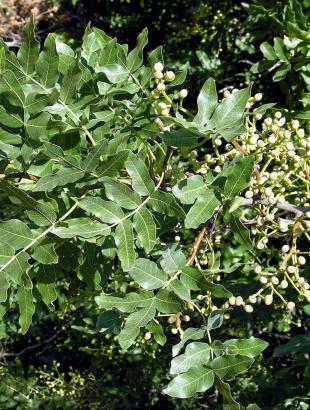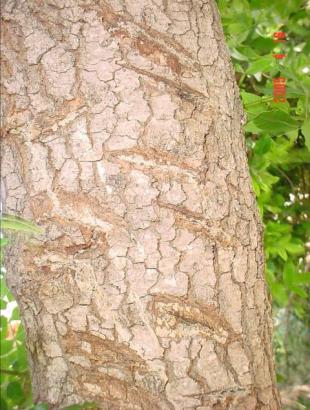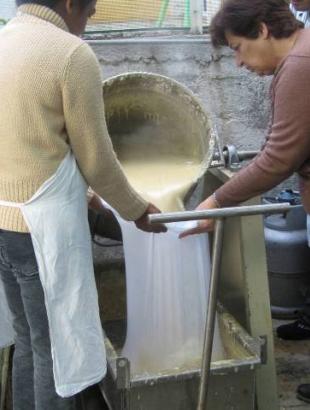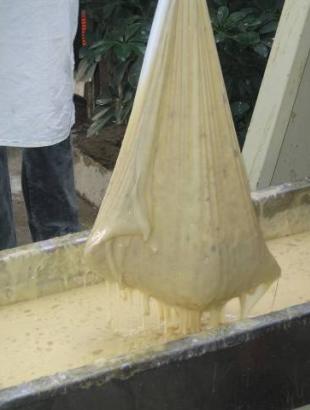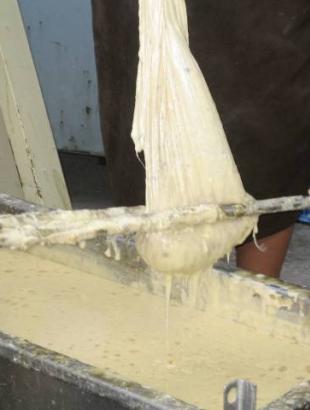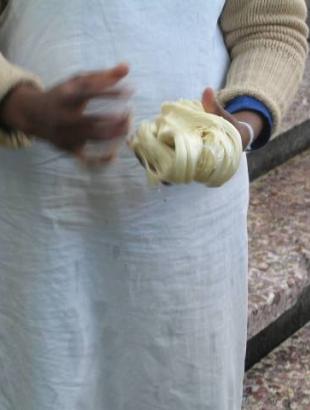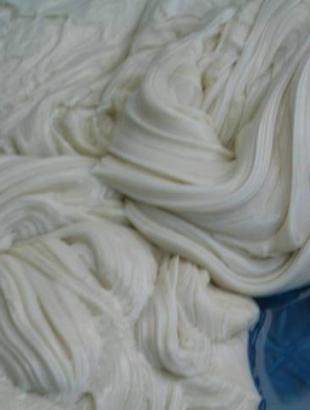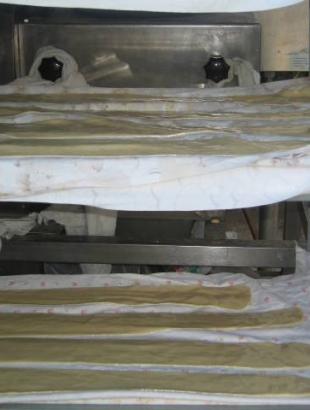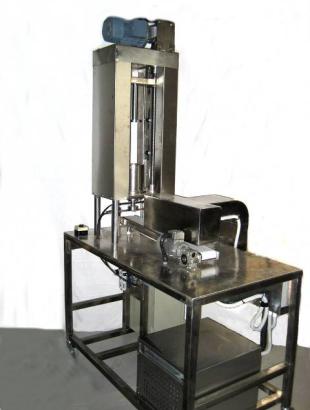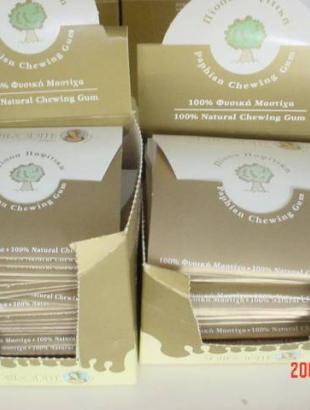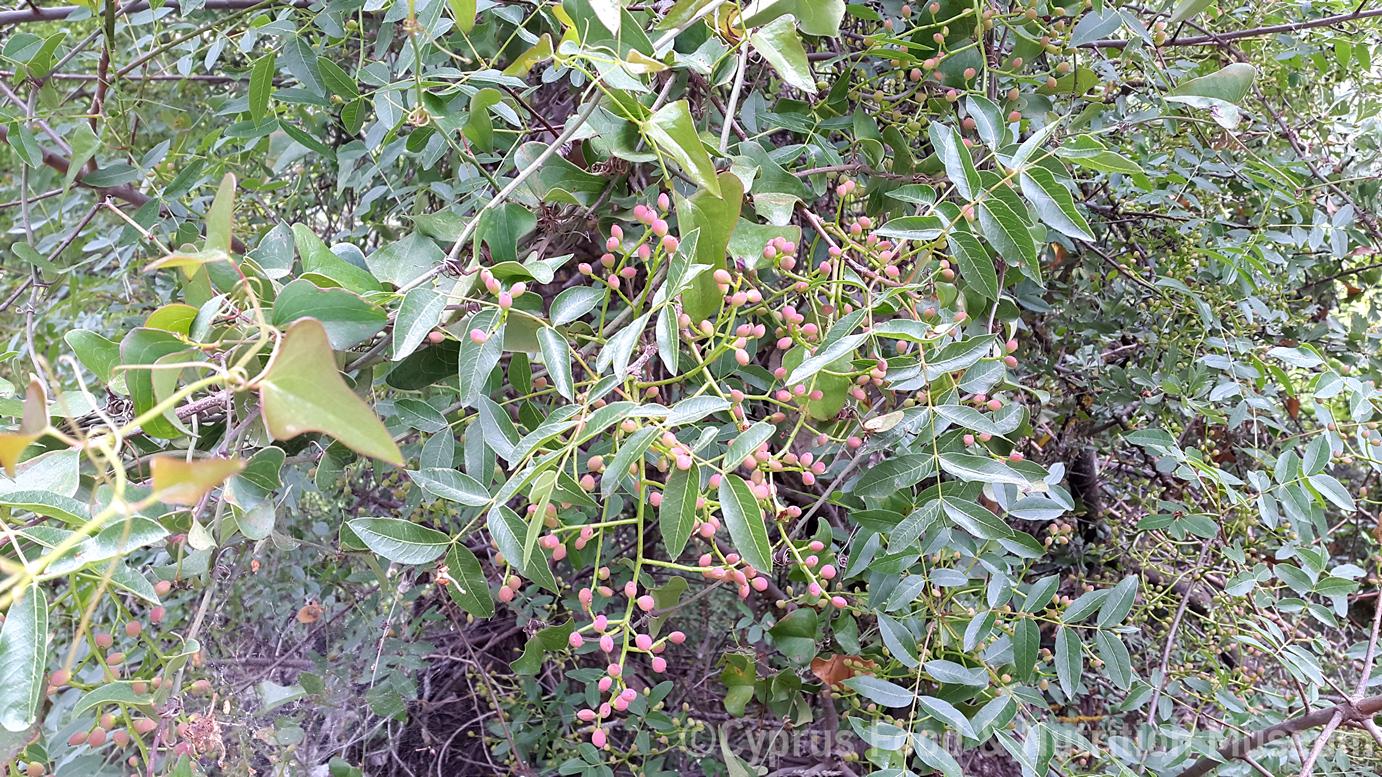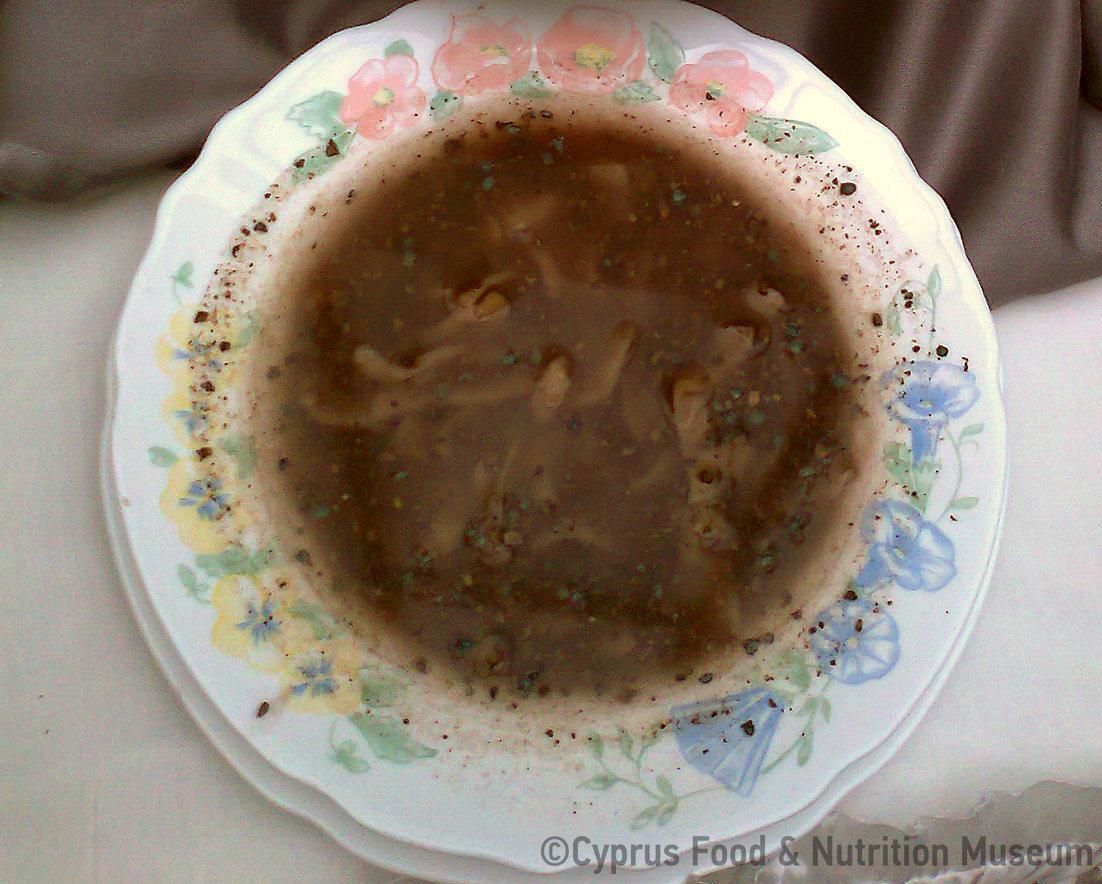Tremithopissa (or Paphitiki pissa- a chewing gum) is made from resin of the tremythia tree (terebinth tree, Pistacia terebinthus or Pistacia atlantica, subsp. Cypricola).
Name - Origin
Μαστίχα.
Paphitiki pissa (or tremithópissa) is made from resin of the tremithia tree (Pistacia terebinthus or Pistacia atlantica, subsp. Cypricola). It is hard with a strong characteristic resin taste.
It is also called white or Pahitiki pissa. The name Paphitiki pissa is connected to the tree from which the resin, the raw material for making pissa, is derived: 1 this tree is Pistacia atlantica, subsp. Cypricola, the Terebinth Tree. The terebinth tree is a deciduous tree, up to 16m tall, considered to be native to Cyprus. Individual trees or clusters of trees are found in the Paphos district, while large trees are found near churches and within communities in the Limassol and Larnaca districts. The name atlantica is related to the name of Mount Atlas in Algeria. The name cypricola was given to the subspecies, apparently because it is found only in Cyprus.
Oğuz Yorgancıoğlu, gave his information in Turkish, through Kadir Kaba, in occupied Nicosia. The description refers to the 1930s-1950s. The centre of production of paphitiki pissa (Baf sakızı) was the village of Lemba in Paphos. Almost all families in Lemba were working for the production of pissa; it was not their main occupation but an additional, supplementary occupation alongside agricultural or other work. The best known producer was Cafer, the village's muhtar, who used to sell his own and other people’s production; a successful bargaining meant that he was able to secure the best price. In the late 1940s and early 1950s, paphitiki pissa that was produced in that area was sold in half-oka pieces for two Cyprus pounds per oka. The whole production of paphitiki pissa laid mainly in the hands of the producers in the villages of Lemba, Kissonerga and Tala, since in the areas between these three villages there were trees of 500, even 700-800 years old. 3-4 people could fit to hide in their hollow. A large tree could yield up to two okas of trimintina and when fully grown, it could yield up to 4-5 okas. In a year of good production, the total pissa production in the Paphos area could reach 100 okas. Apart from a few Greek Cypriots (Rum) in the villages of Emba and Mesogi, the main producers were Turkish Cypriots. Pissa production continued until the end of 1963. In the following year, due to bicommunal unrest, the Turkish Cypriot producers abandoned their villages, and the pissa production came to a halt. Today, resin is imported. The centre of production of Paphitiki pissa is Geroskipou, in the Paphos district, where local craftsmen still follow the traditional method of production. Search for Paphitiki pissa in the Foods section for a detailed description of the production process.
Functional and symbolic role
Tremithopissa was used for chewing. It was generally believed to be beneficial for the stomach, for digestion. When baking koullouria and flaounes, though, Chios mastic was/is used.
Additional information and bibliography
Fruits of Pistacia atlantica have been found in prehistoric settlements (e.g. at the site of Kastros on the cape of Apostolos Andreas (of the 6th millennium BC) and also in Kalopsida, in Kissonerga and in Sotira (of the 3rd/2nd millennium BC). The word ki-ta-no, recorded on plates in Linear B, is interpreted as resin from Pistacia atlantica; more than one ton of this resin was included, as Eastern merchandise destined for the Aegean, in the cargo of the shipwreck of Ulu Burun (1300 BC). It is even hypothesised that the ki-ta-no on the plates may have been the Cypriot resin that was probably being exported to Crete (Karageorghis 1996, 66).
Cyprus resin, as well as the terminth tree, were mentioned centuries later by Dioscorides (1st c AD). "The terebinth tree is a familiar tree... and the resin of which is also produced in Cyprus" (Dioscurides, I.71 ). Giovanni Mariti, who lived in Cyprus between 1760 and 1767, is one of the modern travellers who refer to the tree or its resin: "Resin is collected in Cyprus in two qualities: the first and finest one is that which drips in pure drops from the slits made on the Pistacia terebinthus and collected on summer mornings. The lower quality one is the one that flows into the ground and is less pure. Both kinds are exported in containers containing 20 lbs. each... Cyprus turpentine enjoys a great reputation, especially in Venice. It is mainly collected in the Paphos district. The duty is 4,25 piastres per box of four containers." (Mariti, 1769/1971, 119). During his tour of Paphos in 1839, the American missionary Lorenzo Warriner Pease observed the trees... "called trimithousa, which after being wounded in the trunk yield a gum, resembling pitch, which the women chew. We saw several of these trees" (Severis 2002, 779-780). L. De Mas Latrie also mentions 'le mastic' among the products of Cyprus (Mas Latrie 1879, 73).
Karageorghis V., 1996: “Some aspects of the maritime trade of Cyprus during the Late Bronze Age”, στο V. Karageorghis and D. Michaelides (επιμ.), The development of the Cypriot economy from the Prehistoric period to the present day, Πανεπιστήμιο Κύπρου, Τράπεζα Κύπρου, Λευκωσία 1996, 61-70.
Rizopoulou-Igoumenidou E. (2008) “Τρεμιθόπισσα, πίσσα άσπρη ή παφίτικη πίσσα: η μαστίχα της Κύπρου” (Tremithopissa, white pissa or pafitiki pissa: the mastic (chewing gum) of Cyprus), under publication in Μαστίχα Χίου (Mastic of Chios) Tenth Workshop, Chios, 17-19 October 2008 (Piraeus Bank Group Cultural Foundation, Athens), 10 pages.
Eleni Christou

